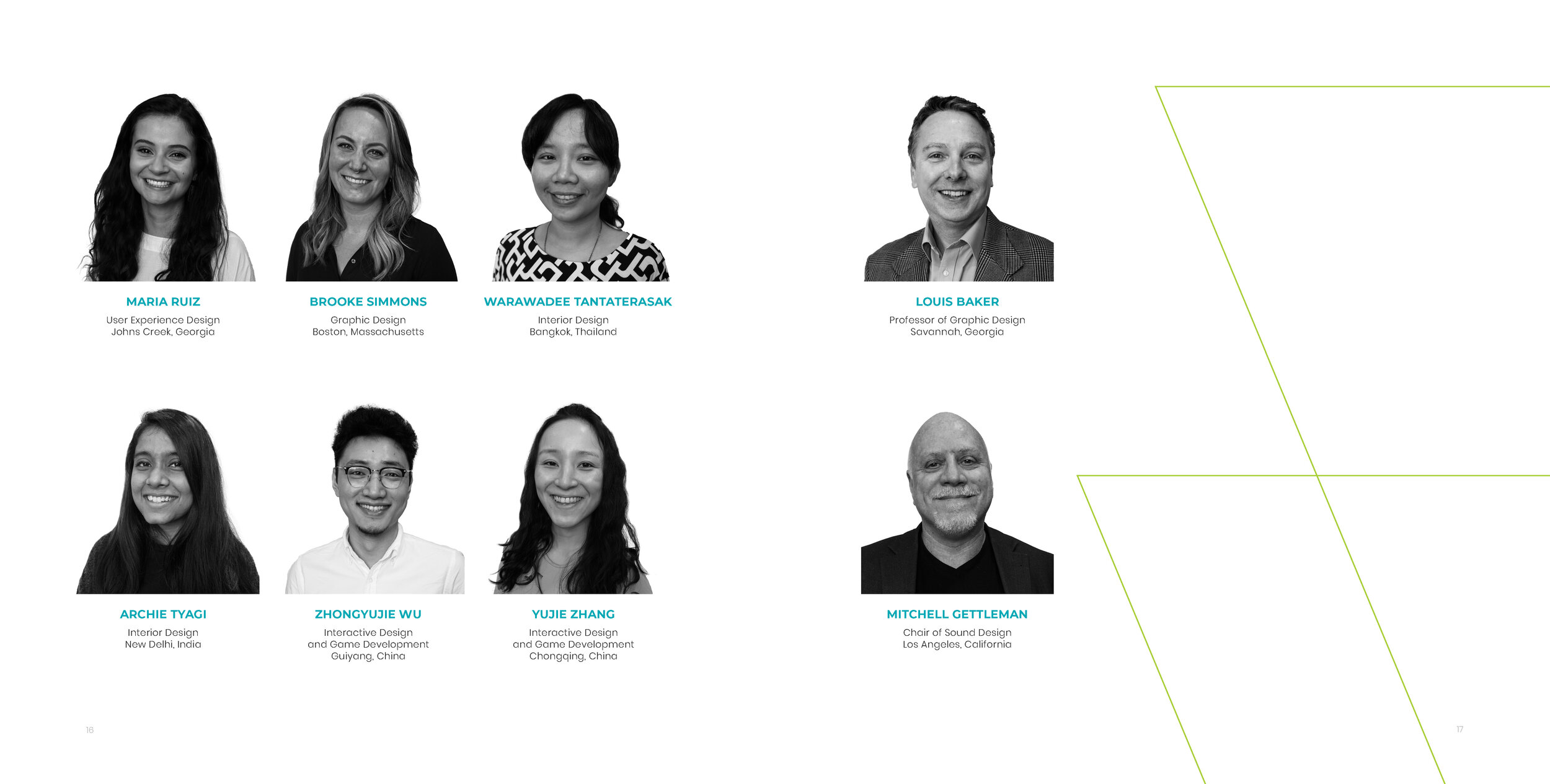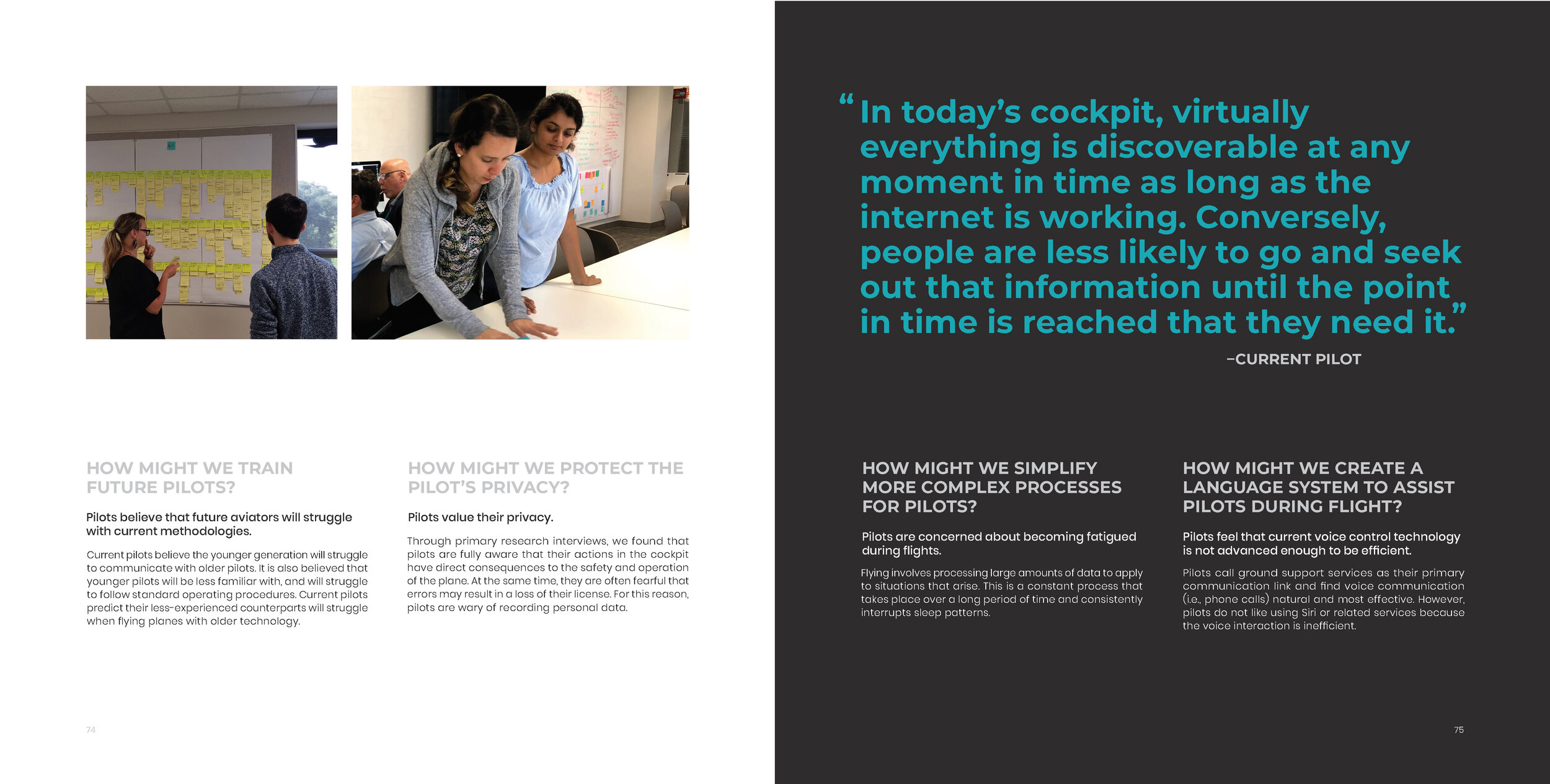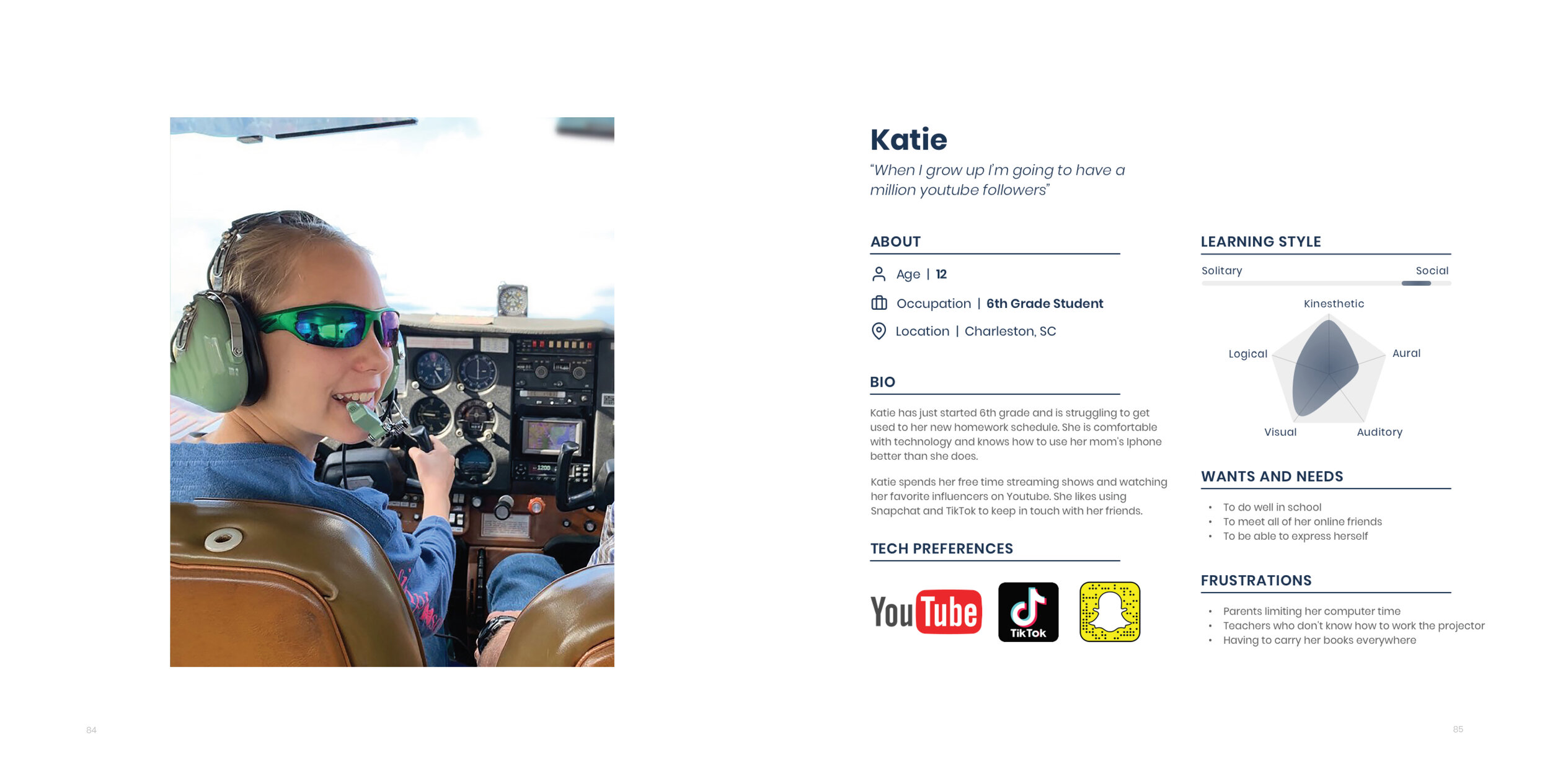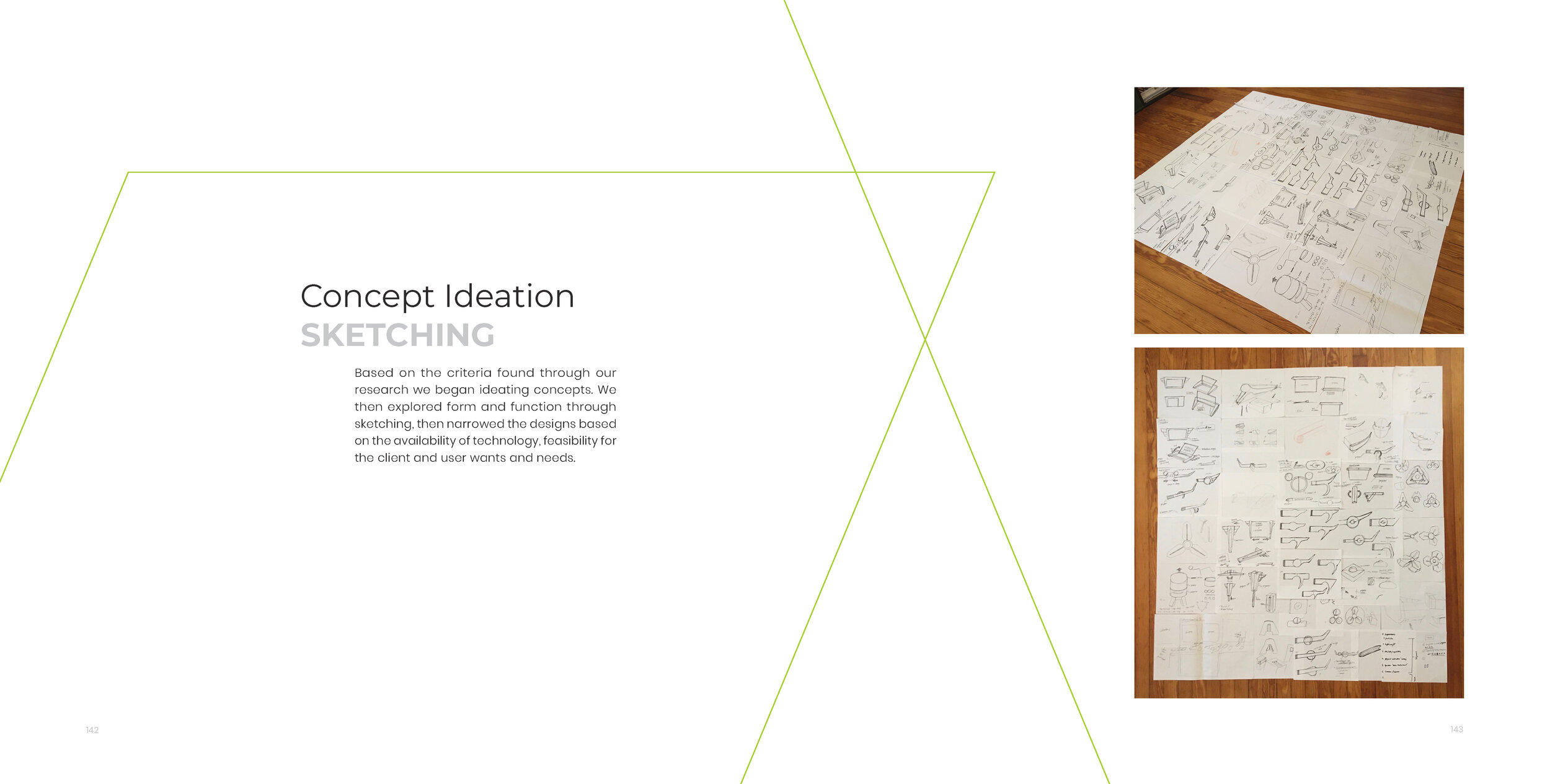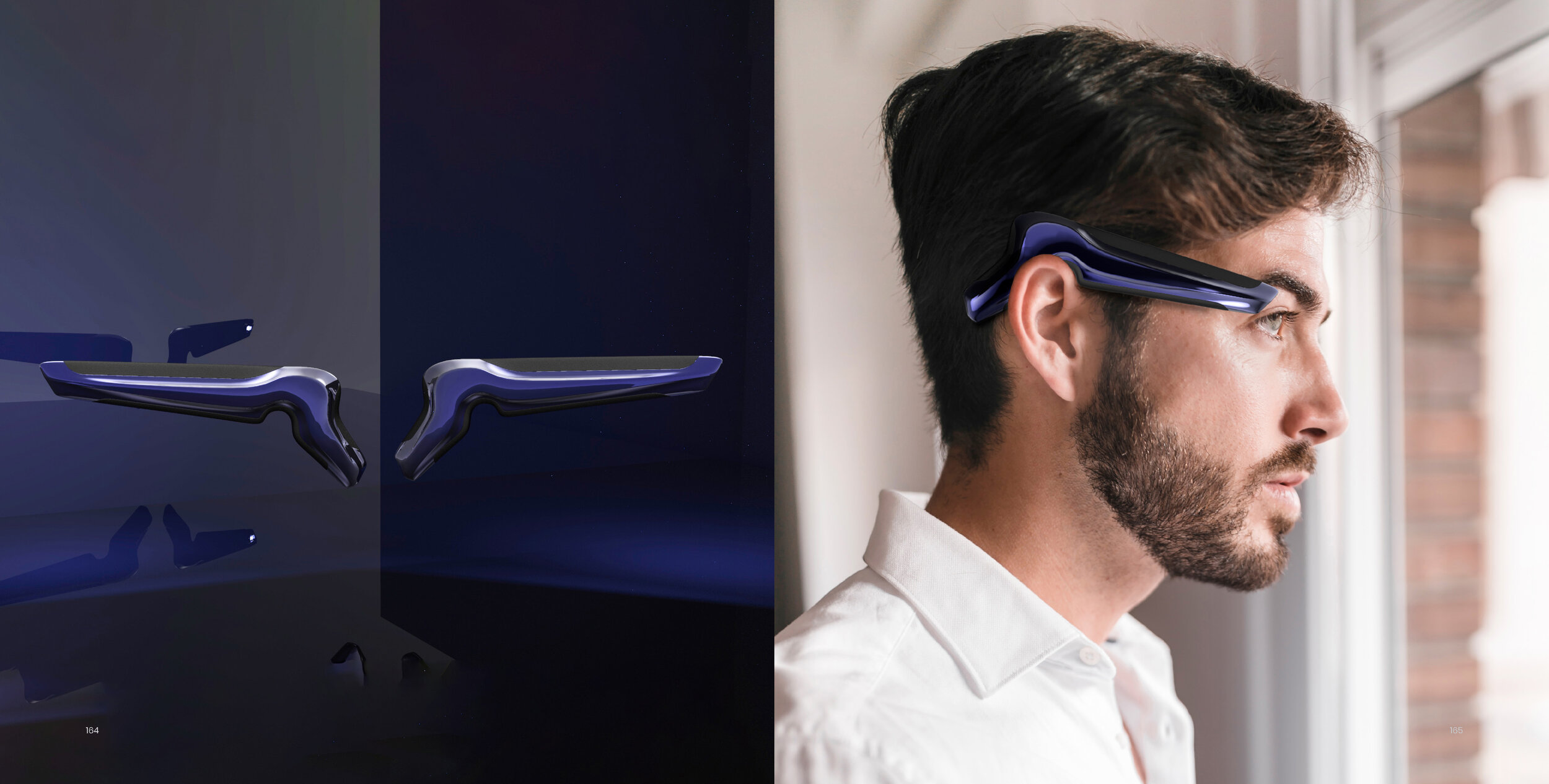Gulfstream Aerospace
FUTURE OF FLIGHT TRAINING
My Role
Project Lead
Project Duration
10 Weeks
Problem
We were asked to look 5–15 years into the future, to ask WHO will be flying Gulfstream aircraft, and WHAT are their expectations and preferences for how they want to interact with content to perform the Reference, Learning, and Operations tasks.
“The primary purpose of the project is to determine how to present Flight Crew content in the future to enable two primary tasks — Reference and Learning. The Reference task is one where the flight crew has a question in mind and needs to find a piece of information. The Learning task is one where the flight crew wants to study the aircraft systems or operations. The Operations task happens when the crew is actually operating the aircraft and needs information to support the operation. Crews need operations support because there may be information relevant to what they are doing, but they may not be aware of it because it is not frequently referenced, or they are inexperienced.”
“For example, there would be a need to apply a special procedure if it was very cold outside. In this case, what is envisioned is that the Flight Crew content is aware of what the crew is doing, and is going to do in the future. If they are going to fly to Moscow tomorrow and it is going to be –45 °C overnight there. In that case, the application supporting the content would search the content for items that were relevant to the future weather conditions in Moscow and ‘push’ them to the crew for their awareness.”
“We have a second ‘Channel’ of information that we provide to our flight crews. We want you to examine and envision this body of information as it is currently unstructured, visually cluttered, and difficult to process as it has no unifying style to it.”
“Finally, what is “Best in Class?” Conduct a survey across other industries looking for examples of what defines Best in Class for materials needed to operate complex systems, performing the tasks Reference, Learning, and Operations.”
7 Countries, 11 Majors, 10 Weeks, 1 Team
Collaborations with SCADpro students offer the opportunity for Gulfstream Aerospace to gain insights from a comprehensive team of creatives and for students to gain real-world experience. Variety in discipline, education level, and worldview bolster the generation of groundbreaking ideas for your company.
Approach
In order to fully understand how current pilots and members of Generation Z think, and to define their wants and needs, we had to conduct extensive secondary research. We sought out a wide variety of resources to help lay the foundation of our quest.
During primary research 259 survey results were collected and 16 interviews were conducted via Skype, phone, and in-person. Participants were sought via message boards, online forums, Facebook groups and word of mouth. 72.7% of participants were under the age of 14. 24.6% were ages 15–24. 2.7% of participants fell in the 25+ demographic. We collected thousands of data points and through affinitization were able to boil it down to summaries of clear insights.
Development
After researching what both current pilots and Generation Z want in their learning and work environments, we set out to answer our originally tasked questions. Using these insights as inspiration, we created seven different solutions.
After receiving a significant amount of feedback from Gulfstream Aerospace representatives Nick Kershaw and Kristin Medin, it was decided to merge the most compelling aspects of several into one system.
When we set out to create this system, we knew that we had to include aspects of training, professional development, and socialization. We decided that our approach to these features had to revolve around the insights that both Generation Z and current pilots are craving personalization and customization in their work and learning. Gulfstream Venture is the name that we gave to this innovative solution.
Solution
The Venture System of 2030 delivers multiple benefits through a series of products. These include an updated Venture Pod that employs projection and holographic technology, and Venture Glasses that read holographic wireframes. Together they create an amazingly realistic environment for training simulation, as well as provide a fully immersive AR/VR experience. The Venture Glasses can also be used independently, allowing for hands free communication and screen sharing.
Our team split into groups of subject matter experts to prototype the elements of the Venture System.
The experience group took on the task of developing the content and interactions within the venture system. We determined how users would interact with our product and what interfaces would best meet those needs.
Our product team crafted tangible prototypes of Venture Pod, an important component within the Gulfstream Venture system. This included a flexible screen version (2025), and a holographic projection screen version (2030). The Venture Pod is designed to work with Venture Glasses and F.E.L.I.X. in a mobile interactive fashion. It presents simulated content that is portable and easy to operate.
Because the Gulfstream Venture concept and its components include functions and technologies that are abstract and futuristic, we created a video to help clarify and showcase it. It takes viewers through a ‘day-in-the-life’ story of personas ‘Katie: Pilot of the Future’ and ‘Ralph: Established Pilot,’ as they use it for training, professional development, and social interaction. To accomplish this we wrote a script, drew storyboards, shot footage and recorded sound. It should also be noted that we were fortunate to have the assistance of VFX designer Luke George, who edited and added special effects in post-production.
Result
It’s been said that Gulfstream’s main value is giving back time to its customers. The Venture System will give time back to pilots. We believe that personalization is the future of aviation because it will provide effective and efficient training, professional development and social interaction. AI and immersive experiences will enable this change. Watson is just the beginning. By 2030, the technology to support advanced predictive AI like F.E.L.I.X., as well as the immersive aspects of Gulfstream Venture will be in place.
F.E.L.I.X. may seem far fetched today, but in ten years it will make Siri look like a Blackberry. LG has already made a 65” flexible screen that rolls up, and Microsoft is developing portable holographic technology as we speak. Innovation is key as Gulfstream consistently proves in the aviation industry. New advances always seem ridiculous at first—but if you can successfully develop the content, the technology to use it will inevitably have to follow. We see Gulfstream Venture as the way of the future, and believe that future pilots are willing to settle for nothing less.





